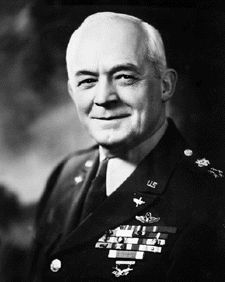 | Arnold Air Society |  |

I am an Arnold Air Society Cadet Major with the position of Area X (ten) Information Manager. I successfully completed my candidate training with the Stephen M. Scherp Squadron at Embry-Riddle University in Prescott, Arizona as a part of the Phoenix Class.
This is the Area X Staff along with our advisor, Col. McCarraher 3.
In 1911 he entered aviation and became a flyer. He was detailed to the Signal Corps in April 1911, piloting the Wright Bi-Plane. He was one of the first flyers taught by the Wright Brothers.
In June 1912, General Arnold established a new altitude record when he piloted a Brugress-Wright airplane to a height of 6,540 feet. He participated in the Regular Army and National Guard Movements in the states of New York and Connecticut and established several aeronautical records. On 09 October 1912, Arnold won the first Mackay Trophy to be awarded for his flight demonstrations.
He progressed rapidly through the ranks, and by 11 February 1935 he had received the temporary rank of Brigadier General. This rank was made permanent on 02 December 1940. He was awarded permanent rank of Major General and became Chief of the Army Air Forces in 1941. In March 1942, "Hap" Arnold became Commanding General of the Army Air Force.
He retired from the service on 30 June 1946 with the ratings of Command Pilot and Combat Observer. His many accomplishments, of both personal and national significance, gained him the distinction of becoming the first five-star General of the United States Air Force on 07 May 1949 by an act of Congress.
He died on 15 January 1950 of a cardiac condition.
General Arnold received the Distinguished Flying Cross in November 1936, and the Distinguished Service Medal in October 1942. Arnold was awarded the Air Medal in March 1943, and in September 1945 he received the Oak Leaf Cluster to the Distinguished Service Medal. In October 1945, he was awarded a second Oak Leaf Cluster to the Distinguished Service Medal. His other awards included: The World War II Victory Medal; American Defense Medal; American Theater Ribbon; Asiatic-Pacific Theater Ribbon; European-African-Middle Eastern Theater Ribbon, 1942-1943; U.S. Military Badge No. 1; Morocco's Grand Cross, Grand Officer of the Commander (Ouissam Alaouite); Yugoslavia's Sun in the degree of Grand Aztec Eagle; Mexico's Order of Military Merit; and England's Knight Grand Cross of the Order of the Bath.
The H. H. Arnold Award was established in honor of General Arnold by the Air Force Association in 1948. It is presented for the "most outstanding contributions toward the peace and the security of the United States in the field of aviation."
General Arnold had but one theme: "It's got to be done and done quickly, so let's get it done." Can there be any doubt of our pride in General Henry "Hap" Arnold, the man who had the imagination to see success and the confidence to create it?
At summer camp in 1947, a group of AFROTC cadets from Cincinnati, Ohio discussed the possibility of an honorary society and presented their idea to Captain Nolkamper. A committee of cadets was formed to write a constitution and to find a name. The name chosen in an unanimous decision was made to honor General H. H. Arnold, one of the greatest leaders in aviation history. The permission to use his name was granted in December of 1947, with the provision that the society begin on a local basis at the University of Cincinnati, with expansion of a spontaneous nature.
The Second National Conclave resulted in the society's affiliation with the Air Force Association. The Second National Conclave also initiated the establishment of the National Publications Headquarters and the Arnold Memorial Scholarship.
At the Fourth and Fifth National Conclaves, a reconstruction of the organizational structure of the society was proposed. This resulted in the formation of the Board of Directors, consisting of the National Commander and all the Area Commanders. At succeeding conclaves, more awards and policies were initiated, such as the formation of Angel Flight, and the Arnold Air Society-Link Foundation Awards for graduate work.
The following three objectives were adopted by AAS to enhance the Air Force Reserve Officer Training Corps (AFROTC) and the United States Air Force Academy (USAFA), and to project the image of the United States Air Force on the university campus and in the surrounding community.
First Objective:
Function of the First Objective:
Second Objective:
Function of the Second Objective:
Third Objective:
Function of the Third Objective:
Candidate pics SOON TO COME!
The Arnold Air Society's Missions
The Arnold Air Society is a professional, honorary service organization advocating the support of aerospace power. The "service" aspect is perhaps the foremost in the mind of many members, because of the society's continuing contributions to our campuses, our communities, and our corps—but it should always be remembered that our primary mission is to improve ourselves as future Air Force officers.
To create a more efficient relationship among Air Force officer candidates, in particular within the Air Force Reserve Officer Training Corps.
To provide opportunities for a greater interaction amoung collegiate level Air Force officer candidates and to encourage increased communication with Air Force officers and leaders in national defense, government, and industry.
To aid in the development of effective Air Force officers.
To provide more opportunities for Air Force officer candidates to exercise leadership, management, organizational, and public relations skills.
To further the purpose, traditions, and concepts of the United States Air Force.
To provide opportunities for officer candidates to participate in campus and community service activities, demonstrating the close relationship between civilian and military institutions.